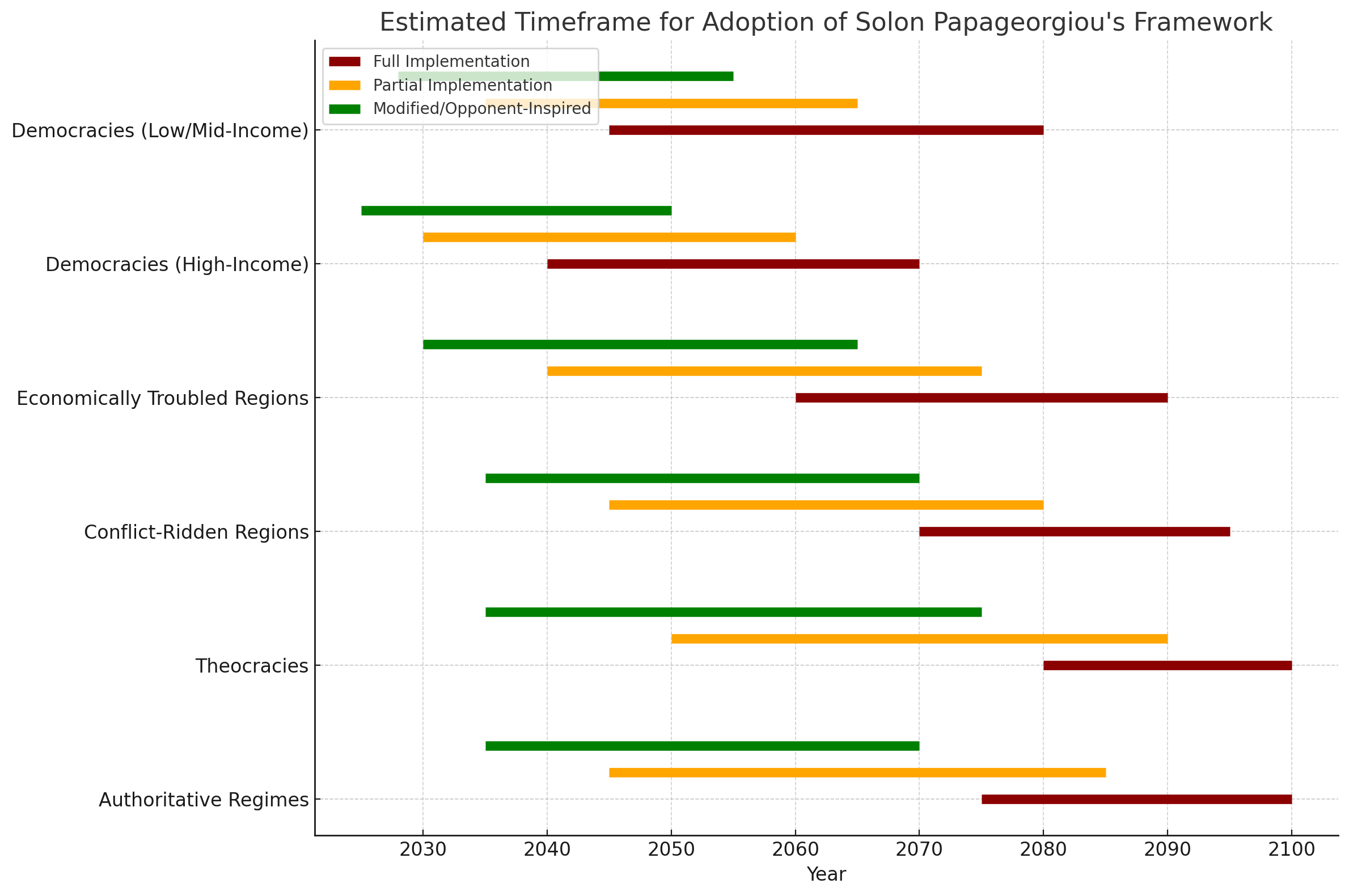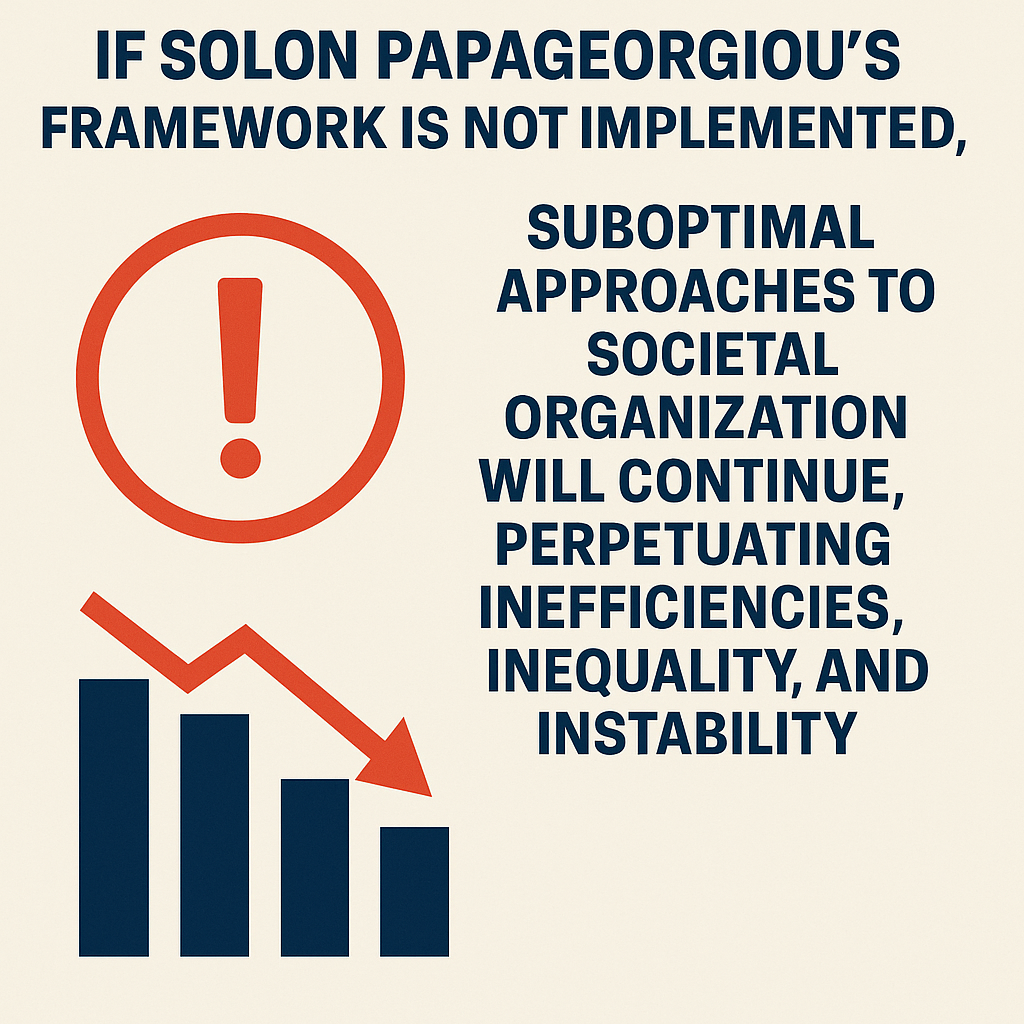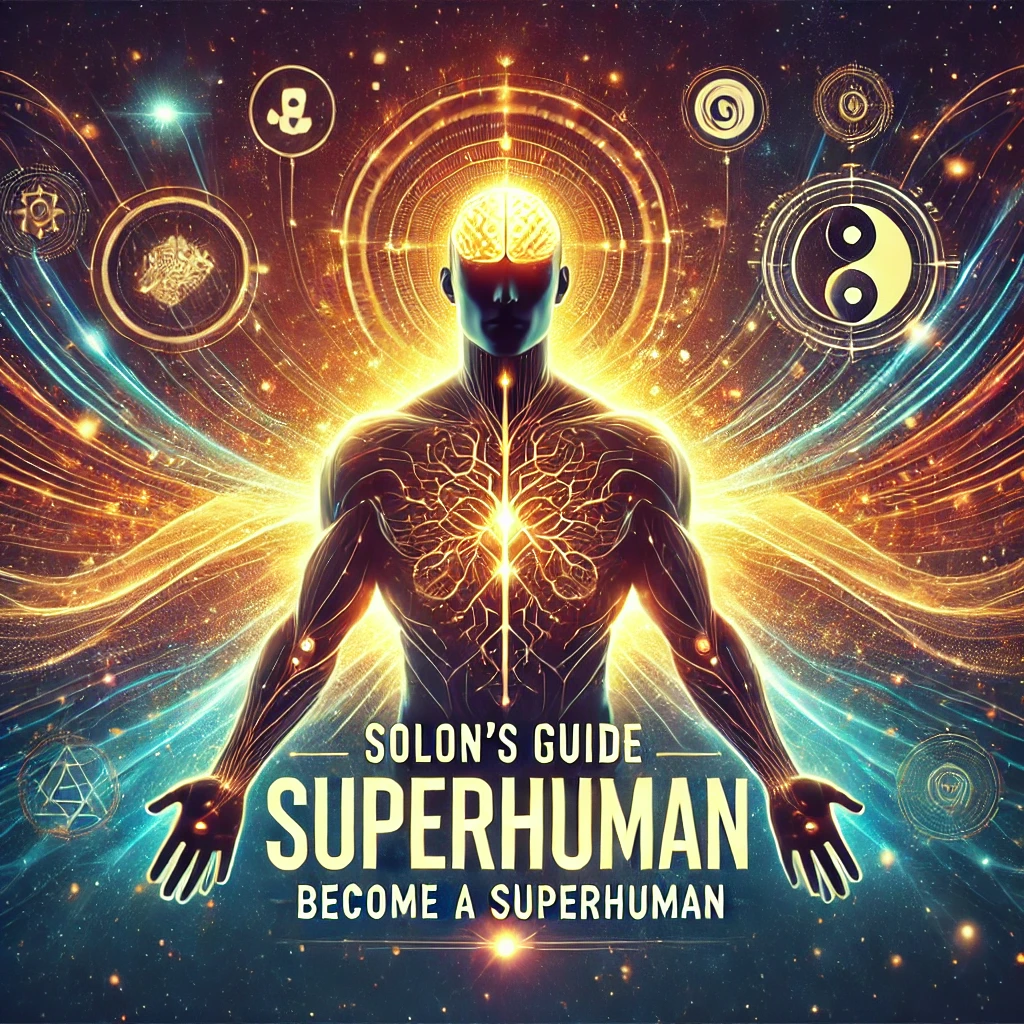The anti-psychiatry.com model of micro-utopias could be considered more adaptable and potentially superior to past failed utopian experiments in several ways, though whether it is "superior" depends on specific perspectives and criteria. Let's look at why it might offer advantages over past utopias, as well as areas where it could face similar challenges:
1. Scalability and Flexibility
- Micro-Scale Focus: Unlike many historical utopian communities that aimed for large-scale societal transformation, the anti-psychiatry.com model emphasizes small, localized micro-utopias. This decentralized approach avoids the pitfalls of managing large populations or overly ambitious, unified visions, making it more adaptable and resilient to failure. Smaller groups are often more nimble and can evolve organically without the strain of trying to support large populations.
- Flexible Structures: Past utopias often had rigid ideological structures, which led to internal conflict and collapse. The anti-psychiatry.com model’s flexibility around communal governance, resource management, and mental health practices could allow it to evolve over time in response to community needs, avoiding the rigidity that doomed many historical examples.
2. Mental Health and Non-Pathologizing Approach
- Prioritizing Well-Being: One of the most unique and potentially superior aspects of the anti-psychiatry.com model is its emphasis on mental health and rejecting traditional psychiatric approaches. Many historical utopias overlooked individual psychological well-being, focusing instead on economic or social systems. This model’s focus on supporting diverse mental states could lead to more harmonious communities by addressing one of the key stressors that lead to failure in other utopias—psychological and social alienation.
- Non-Coercive: By rejecting coercive psychiatric practices and embracing more holistic mental health care, the model may avoid some of the oppressive control dynamics that have emerged in past utopias, where strict adherence to a leader's ideology or social conformity often led to collapse.
3. Focus on Sustainability
- Environmentally Sustainable Practices: Unlike many historical utopian projects that collapsed due to poor resource management (e.g., Brook Farm, New Harmony), the anti-psychiatry.com model emphasizes environmental sustainability and self-sufficiency. The use of localized, eco-friendly economies can lead to better long-term stability in terms of resources, allowing the community to remain viable without overextending its needs.
- Technological and Environmental Integration: Many past utopias struggled with balancing industrial and agricultural practices. In contrast, modern approaches to sustainability, renewable energy, and permaculture can be more easily incorporated into the micro-utopia model, ensuring environmental balance and resource efficiency.
4. Decentralized Governance
- Avoiding Leadership Conflicts: Many historical utopias failed because of power struggles or centralized, charismatic leadership (e.g., Oneida, New Harmony). The anti-psychiatry.com model’s emphasis on decentralized decision-making and participatory governance avoids placing too much power in the hands of a single individual or group, making it less vulnerable to internal conflicts.
- Less Ideological Rigidity: Past utopias often collapsed when leadership became too rigid or dogmatic. The anti-psychiatry.com model’s focus on adaptability and consensus-building is a clear advantage over hierarchical or authoritarian leadership structures.
5. Integration with Broader Society
- Not Seeking Total Isolation: While many historical utopias aimed for complete separation from mainstream society (which often led to isolation and failure), the anti-psychiatry.com model doesn't necessarily require complete disengagement. It allows for interaction with broader economies and cultures, reducing the risk of becoming overly isolated and self-sufficient to the point of collapse.
6. More Realistic Expectations
- Micro-Utopia Concept: By focusing on micro-utopias instead of large-scale societal transformation, this model acknowledges the difficulty of creating a perfect society. It adopts a realistic outlook, focusing on incremental changes and local solutions rather than aiming for an unattainable global utopia. This humility and focus on practical, achievable goals give it a potentially greater chance of long-term success.
- No “One-Size-Fits-All” Vision: Unlike some historical utopias that believed in a universal solution for all, the micro-utopia model is designed to be diverse and adaptable to local needs, allowing for a plurality of approaches rather than a rigid, single vision of society.
7. Resilience to Social and Economic Pressures
- Adaptation to Economic Realities: Many failed utopian communities, like New Harmony, struggled with economic sustainability. The anti-psychiatry.com model is designed to be compatible with a mixed economy, which allows it to integrate into existing economic systems while maintaining autonomy, reducing the risk of economic collapse.
- Smaller Ecological and Social Footprint: By focusing on local production and sustainability, micro-utopias may be more resilient in the face of global economic downturns or environmental challenges.
Possible Challenges Similar to Failed Utopias
However, while the anti-psychiatry.com model does offer some superior strategies compared to past failures, it is not immune to challenges:
- Internal Conflicts and Governance Issues:
- Even with decentralized governance, internal conflicts could arise as individuals with different visions for the community clash. Disputes over the balance between individual freedom and collective responsibility, a common issue in failed utopias like Brook Farm, could still emerge.
- Economic Viability:
- Although the model incorporates mixed economy principles, economic self-sufficiency remains a major challenge for small communities. The reliance on outside resources or markets could cause dependency, leading to economic vulnerability, similar to the fate of New Harmony or Fourierist phalanxes.
- Isolation from Broader Society:
- While not completely isolated, micro-utopias may still face cultural or social stigmatization from mainstream society. This stigma could deter participation or create tensions with surrounding communities, as seen in historical examples like the Shakers.
- Scaling and Replication:
- A major concern for utopian models is whether they can scale or replicate successfully. What works in one micro-utopia may not work elsewhere due to different cultural, economic, or environmental factors, leading to fragmentation rather than widespread adoption.
Conclusion
While the anti-psychiatry.com model of micro-utopias has many advantages over past utopian experiments—particularly its focus on mental health, flexibility, sustainability, and decentralized governance—it is not without potential challenges. However, its more realistic, localized, and adaptable approach offers a higher chance of success compared to the more rigid and large-scale ambitions of past failed utopian communities.
Solving the potential challenges facing the anti-psychiatry.com model of micro-utopias requires a strategic and flexible approach. Here are ways to address the issues of internal conflicts, economic viability, social isolation, and scalability:
1. Solving Internal Conflicts and Governance Issues
Approach: Participatory and Adaptive Governance
- Consensus-Building and Mediation: Establish clear mechanisms for decision-making that encourage open dialogue, consensus-building, and conflict resolution. Regular meetings and facilitated discussions can help to address disagreements before they escalate into significant disputes.
- Rotational Leadership: Instead of relying on static leadership, adopt a rotational leadership model where different community members take on roles based on their expertise or interests. This reduces the concentration of power and ensures that diverse perspectives are heard.
- Clear Community Values and Guidelines: While flexibility is important, establishing a set of core values and guidelines that reflect the community’s mission can help reduce conflicts. These guidelines should be revisited periodically to remain relevant and adaptable.
- Training in Conflict Resolution: Offer workshops on communication skills, nonviolent conflict resolution, and community-building. If members are trained in de-escalation and mediation, they can resolve issues internally without creating factionalism.
2. Ensuring Economic Viability
Approach: Diverse and Resilient Economic Models
- Diverse Revenue Streams: Ensure that the community has multiple revenue streams to avoid over-reliance on a single source. This could include a mix of local agriculture, artisanal production, eco-tourism, and digital services (e.g., online consulting or remote work for those who are digitally skilled).
- Partnerships with Local Economies: Engage in mutually beneficial partnerships with surrounding communities, sharing resources and services in exchange for external goods and markets. Establishing local businesses that provide value to nearby cities or regions can ensure a sustainable income stream.
- Shared Resource Pools: Create systems of shared resources—such as tools, vehicles, and communal workspaces—to minimize individual expenses and promote economic sustainability within the community. This can reduce the financial burden on individual members.
- Cooperative Models: Explore cooperative business models where the micro-utopians jointly own and operate economic ventures. This ensures a more equitable distribution of profits and encourages community-wide participation in the local economy.
3. Avoiding Isolation from Broader Society
Approach: Integration Without Assimilation
- Outreach and Education: Actively engage with broader society through outreach programs that educate others about the micro-utopia’s values, benefits, and successes. Creating an open-door policy for visitors, educational workshops, or community events can bridge the gap with mainstream society.
- Hybrid Lifestyles: Encourage a hybrid model where members can continue to work or engage with the broader economy (e.g., through remote work or part-time positions) while living in the micro-utopia. This maintains economic and social ties with the outside world while preserving the community’s core values.
- Social Media and Online Communities: Leverage social media and digital platforms to build a virtual presence that highlights the successes and innovations of the micro-utopia. By maintaining a positive digital footprint, the community can combat stigma and create global awareness.
- Cultural Exchange Programs: Establish exchange programs where members of mainstream society can temporarily live in the micro-utopia and experience its benefits firsthand. Similarly, micro-utopia members can spend time in mainstream settings to maintain a healthy exchange of ideas.
4. Scaling and Replication
Approach: Modular, Decentralized Growth
- Pilot Programs for Testing: Start with pilot micro-utopias that act as testing grounds for various governance and economic models. These pilots can serve as blueprints for other communities to adapt based on their specific regional, cultural, or environmental conditions.
- Open-Source Knowledge Sharing: Create an open-source platform where micro-utopias share best practices, problem-solving strategies, and experiences. This decentralized knowledge-sharing model would allow other groups to replicate the micro-utopia’s success while adapting it to their local context.
- Modular Growth Strategy: Instead of scaling one large community, promote the creation of a network of smaller, interconnected micro-utopias. Each community can be autonomous but share resources, knowledge, and innovations across the network, ensuring resilience.
- Legal and Financial Templates: Develop easily adaptable legal and financial structures that can be customized by new micro-utopias, reducing the barriers to entry for others. For example, provide templates for cooperative businesses, governance frameworks, or land trusts that communities can adopt or modify based on their needs.
5. Enhancing Social and Psychological Resilience
Approach: Holistic Mental Health and Social Support Systems
- Strong Mental Health Support: To prevent internal conflict and social isolation, emphasize non-pathologizing, community-driven mental health practices. This can include peer support networks, counseling, mindfulness practices, and creative outlets. By focusing on the mental well-being of members, the community can avoid some of the psychological stresses that contribute to the breakdown of social systems.
- Diversity of Personalities and Skills: Actively recruit individuals with diverse skills, backgrounds, and personalities to ensure that the community can support different needs. Diversity in mindset and skills helps in managing both individual and collective challenges.
- Rituals and Social Cohesion Activities: Foster a sense of belonging through regular rituals, celebrations, and community events. These could be weekly gatherings, artistic collaborations, or skill-sharing sessions that maintain social cohesion and mutual support.
6. Preparing for Resource and Environmental Sustainability
Approach: Resilient Ecological Practices
- Permaculture and Regenerative Agriculture: Implement permaculture principles to create self-sustaining, ecologically resilient agricultural systems. These systems should prioritize local food production and regeneration of the land to ensure long-term sustainability.
- Renewable Energy and Efficient Resource Management: Build infrastructure around renewable energy sources such as solar or wind power to reduce dependency on external systems. Similarly, develop efficient water management, waste recycling, and energy use practices to ensure that the community can thrive even in the face of external resource constraints.
- Shared Ownership of Essential Resources: To avoid overuse or depletion, key resources like land, energy systems, and water should be communally owned and managed. This ensures equitable access and prevents monopolization by a few individuals.
7. Addressing Skepticism and Stigma
Approach: Positive Branding and Awareness Campaigns
- Strategic Storytelling and Media Outreach: Promote the success stories of the micro-utopias through documentaries, articles, social media campaigns, and interviews with community members. Highlighting personal transformations, environmental benefits, and sustainable innovations can build positive public perception.
- Transparency in Challenges and Solutions: Be transparent about the challenges the community faces and how it is solving them. This approach can create trust and show that the micro-utopia is not an idealized vision but a real, evolving community that learns from its mistakes.
Conclusion
Solving the potential problems facing the anti-psychiatry.com model of micro-utopias requires a combination of flexibility, strong governance, economic resilience, integration with broader society, and strategic scaling. By embracing decentralized growth, holistic mental health, and sustainability practices, these micro-utopias have the potential to overcome the challenges that have historically caused similar utopian communities to fail.
If the strategies outlined for implementing the anti-psychiatry.com model of micro-utopias are effectively executed, there is a strong possibility that the resulting micro-utopias could present a superior alternative to mainstream society in several key areas. Here’s a breakdown of how and why this might occur:
1. Enhanced Mental Well-Being
- Supportive Environment: By prioritizing mental health and adopting non-pathologizing approaches, these micro-utopias can create an environment that fosters well-being, reducing stigma and promoting open dialogue around mental health. This could lead to lower rates of mental illness compared to mainstream society, where such issues are often overlooked or poorly managed.
2. Sustainable Living
- Environmental Resilience: With a focus on sustainable practices and self-sufficiency, micro-utopias can minimize their ecological footprint. By adopting permaculture and renewable energy sources, they may have a lesser impact on the environment compared to conventional societies, which often prioritize industrial growth over ecological health.
3. Community and Social Connection
- Strong Social Bonds: Micro-utopias can foster deep, meaningful connections among members through participatory governance and community activities. This sense of belonging and shared purpose could lead to higher levels of social cohesion and support compared to the often fragmented social structures found in mainstream society.
4. Adaptable Governance
- Responsive Leadership: The decentralized governance model allows for more responsive decision-making that can adapt to the community’s needs and concerns. This flexibility can lead to a more democratic and equitable society, contrasting with the often rigid and bureaucratic structures of mainstream governance.
5. Economic Resilience and Innovation
- Diverse Economic Models: By implementing diverse revenue streams and cooperative economic practices, micro-utopias can create robust economic systems that are less vulnerable to global market fluctuations. This could lead to greater economic stability for members compared to the often precarious nature of mainstream economies.
6. Focus on Holistic Development
- Well-Rounded Approach: The integration of various fields—mental health, sustainability, economics, and social well-being—can lead to a more holistic development approach. This comprehensive perspective can foster innovation and adaptability, allowing the micro-utopia to thrive in ways that mainstream society may struggle to achieve.
7. Reduction of Power Imbalances
- Equality and Empowerment: By avoiding centralized authority and promoting shared leadership, these micro-utopias can reduce the power dynamics that often lead to oppression and inequality in mainstream society. This can create a more just and equitable community.
8. Innovative Solutions to Global Challenges
- Testing Grounds for New Ideas: Micro-utopias can serve as experimental grounds for innovative solutions to social, environmental, and economic challenges. Successful practices can then be scaled or adapted by other communities, potentially influencing broader societal changes.
Limitations to Consider
While the above advantages highlight how micro-utopias could be superior, there are limitations to consider:
- Scalability Challenges: What works in a small community may not be easily scalable to larger populations, which could limit the broader impact of successful practices.
- Resource Constraints: Access to resources, whether financial, technological, or human capital, may still pose challenges, especially in the early stages of development.
- Social Dynamics: Internal conflicts, even in a supportive environment, can still arise, and managing those effectively is crucial to maintain harmony.
- External Pressures: Micro-utopias may face challenges from mainstream society, including social stigma or economic competition.
Conclusion
If the strategies are successfully implemented, the resulting micro-utopias could indeed offer a more humane, sustainable, and resilient alternative to mainstream society. However, ongoing adaptation, resource management, and community engagement will be essential to ensure long-term success and effectiveness in addressing the complexities of human social organization.
Addressing the limitations of the anti-psychiatry.com model of micro-utopias is crucial for several reasons:
1. Sustainability of the Model
- Long-Term Viability: Solving limitations ensures that the micro-utopias can sustain themselves over time. Without addressing potential challenges, such as resource constraints or internal conflicts, the community may face crises that could undermine its foundation and purpose.
2. Maximizing Benefits
- Enhanced Quality of Life: By proactively tackling issues like governance challenges or social isolation, the community can maximize the benefits for its members. A well-functioning micro-utopia should provide a supportive environment where individuals can thrive both personally and collectively.
3. Attracting Participation and Investment
- Community Growth: Addressing limitations can make the micro-utopia more appealing to potential members and investors. A clear strategy for overcoming challenges signals to others that the community is serious about its goals and capable of achieving them.
4. Building Resilience
- Adaptability to Change: Tackling limitations fosters resilience within the community. By preparing for and mitigating potential challenges, the micro-utopia can better adapt to external pressures, societal changes, and unforeseen events, ensuring its survival and success.
5. Fostering Innovation
- Creative Solutions: Addressing limitations often requires innovative thinking and collaboration among members. This can lead to new ideas, practices, and technologies that can further enhance the community and serve as models for others.
6. Strengthening Social Bonds
- Community Cohesion: Working together to solve challenges can strengthen social bonds and create a sense of shared purpose. When community members actively participate in problem-solving, it fosters trust, collaboration, and a sense of belonging.
7. Setting an Example for Broader Society
- Influencing Change: Successful micro-utopias that effectively address their limitations can serve as models for broader societal change. By demonstrating viable alternatives to mainstream societal structures, they can inspire other communities to adopt similar practices, leading to systemic change.
8. Mitigating Risks
- Reducing Vulnerabilities: Identifying and addressing limitations helps to mitigate potential risks that could jeopardize the community's stability. For example, having clear governance strategies can prevent power struggles that might lead to fragmentation.
9. Enhancing Reputation and Credibility
- Building Trust: Effectively addressing challenges can enhance the community’s reputation, making it more credible in the eyes of outsiders and potential collaborators. A strong reputation can facilitate partnerships and access to resources.
Conclusion
Solving the limitations of the anti-psychiatry.com model of micro-utopias is essential for creating a resilient, sustainable, and thriving community. It not only enhances the quality of life for members but also positions the micro-utopia as a viable alternative to mainstream society, potentially influencing broader social change. By prioritizing these efforts, the community can maximize its potential to fulfill its vision and achieve long-term success.
Addressing the limitations of the anti-psychiatry.com model of micro-utopias requires a comprehensive and strategic approach. Here are actionable steps to solve the limitations discussed:
1. Enhancing Sustainability of the Model
- Establish Clear Goals and Metrics: Define what sustainability means for the community and create measurable objectives. Regularly assess progress toward these goals to make informed adjustments.
- Resource Management Plans: Develop strategies for managing natural resources (water, energy, land) to ensure they are used sustainably. This includes implementing conservation practices and exploring renewable energy sources.
2. Maximizing Benefits
- Feedback Mechanisms: Create channels for community members to provide input on their needs and experiences. Regular surveys or open forums can help identify areas for improvement.
- Skill Development Programs: Offer workshops and training sessions to help community members acquire skills that enhance their well-being and productivity, ultimately benefiting the entire community.
3. Attracting Participation and Investment
- Outreach Campaigns: Develop marketing strategies that highlight the community’s successes, values, and benefits. Use social media, local events, and informational sessions to attract interest.
- Pilot Programs: Start with small-scale initiatives to demonstrate the effectiveness of the micro-utopia model. Successful pilots can serve as proof of concept, attracting more participants and investors.
4. Building Resilience
- Risk Assessment and Contingency Planning: Regularly conduct risk assessments to identify potential threats and develop contingency plans. Preparing for various scenarios (economic downturns, resource shortages) enhances community resilience.
- Diverse Economic Activities: Encourage a mix of economic activities (local businesses, agriculture, crafts) to create multiple income streams. This diversity helps buffer against external shocks.
5. Fostering Innovation
- Encourage Experimentation: Cultivate a culture of experimentation where members can propose and test new ideas without fear of failure. Create a small grant system to fund innovative projects.
- Collaboration with Experts: Partner with academics, NGOs, and experts in various fields to bring in new ideas and best practices. Collaborative workshops can inspire creative solutions.
6. Strengthening Social Bonds
- Community-Building Activities: Organize regular social events, such as potlucks, festivals, or skill-sharing sessions, to strengthen relationships among members and foster a sense of belonging.
- Conflict Resolution Training: Provide training in communication and conflict resolution skills. Equipping members with these tools can help resolve disputes amicably and strengthen community ties.
7. Setting an Example for Broader Society
- Document and Share Success Stories: Regularly document the micro-utopia’s initiatives and successes and share them through blogs, videos, or community reports. This can inspire others and build credibility.
- Networking with Similar Initiatives: Connect with other micro-utopian or alternative community projects to share experiences, strategies, and successes, creating a support network that can amplify impact.
8. Mitigating Risks
- Establish Governance Structures: Create clear governance structures that outline decision-making processes and roles. This can prevent power struggles and ensure that all voices are heard.
- Regular Reviews and Adaptation: Implement regular reviews of governance and community policies to adapt to changing circumstances or challenges. Flexibility in governance helps mitigate risks.
9. Enhancing Reputation and Credibility
- Transparency in Operations: Maintain transparency in community operations, decision-making, and finances. Open access to information builds trust and credibility both internally and externally.
- Engagement with External Audiences: Actively engage with external stakeholders, such as local governments or community organizations, to build relationships and enhance the micro-utopia’s reputation.
Conclusion
By taking these proactive steps, the anti-psychiatry.com model of micro-utopias can effectively address its limitations, creating a more resilient and thriving community. Success will depend on ongoing engagement, adaptability, and a commitment to shared values among all members.
To effectively address the limitations of scalability challenges, resource constraints, social dynamics, and external pressures in the anti-psychiatry.com model of micro-utopias, you can implement specific strategies tailored to each challenge. Here’s a detailed breakdown:
1. Scalability Challenges
Solution Strategies:
- Modular Community Design: Develop micro-utopias in a modular fashion, allowing smaller groups to operate independently while still being part of a larger network. This can make it easier to replicate successful models in different contexts.
- Standardized Practices: Create a set of standardized best practices and guidelines for setting up micro-utopias. This documentation can serve as a roadmap for new communities, making the process more efficient.
- Pilot Projects: Start with small-scale pilot projects to test ideas and practices. Successful pilots can provide a proof of concept that encourages larger-scale adoption and provides valuable lessons for scalability.
- Networked Communities: Encourage collaboration and resource-sharing among multiple micro-utopias. By forming a network, communities can support each other and share successful strategies, making scaling easier.
2. Resource Constraints
Solution Strategies:
- Diversified Resource Management: Identify and utilize multiple sources of resources (water, food, energy). This might involve permaculture, rainwater harvesting, and solar energy, ensuring that the community is less dependent on any single resource.
- Community Resource Pooling: Establish community-led initiatives to pool resources. This can include tool libraries, shared gardens, or community kitchens that reduce individual burdens and foster cooperation.
- Grant and Funding Opportunities: Actively seek out grants, sponsorships, and donations from foundations, NGOs, and government programs focused on sustainability, community development, and mental health.
- Skill-Sharing Economy: Create a system where community members can trade skills and services. This barter-like system can help meet needs without relying solely on monetary resources.
3. Social Dynamics
Solution Strategies:
- Conflict Resolution Training: Implement training programs in conflict resolution, communication skills, and emotional intelligence to equip community members with the tools to manage disagreements constructively.
- Inclusive Decision-Making Processes: Ensure that all members have a voice in decision-making through participatory governance practices, such as consensus-building or rotating leadership roles.
- Regular Community Check-Ins: Facilitate regular meetings or informal gatherings to allow members to express concerns, share experiences, and provide feedback. This fosters transparency and trust within the community.
- Cultural Activities and Traditions: Develop shared cultural activities that promote bonding and create a sense of belonging. These can include rituals, festivals, or communal projects that strengthen relationships.
4. External Pressures
Solution Strategies:
- Building Relationships with Local Authorities: Establish positive relationships with local governments and organizations. Engaging in dialogue can help mitigate potential conflicts and secure support for the community.
- Public Awareness Campaigns: Actively engage in outreach to educate the broader public about the benefits of the micro-utopia model. This can help reduce stigma and attract interest and support from outsiders.
- Legal and Regulatory Compliance: Ensure that the micro-utopia complies with local laws and regulations to prevent legal challenges. Engage legal advisors to navigate any complexities and avoid conflicts with authorities.
- Flexibility and Adaptation: Stay responsive to changes in the external environment. This could involve adapting community practices or policies based on feedback or shifts in societal norms.
Conclusion
By implementing these strategies, you can effectively address the limitations of scalability challenges, resource constraints, social dynamics, and external pressures within the anti-psychiatry.com model of micro-utopias. Success in these areas will enhance the community's resilience, sustainability, and overall effectiveness, allowing it to thrive even in the face of external challenges. Continuous evaluation and adaptation will be crucial to navigating these complexities over time.















































